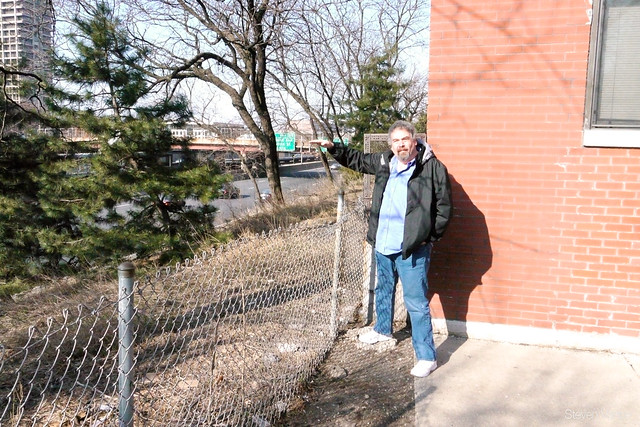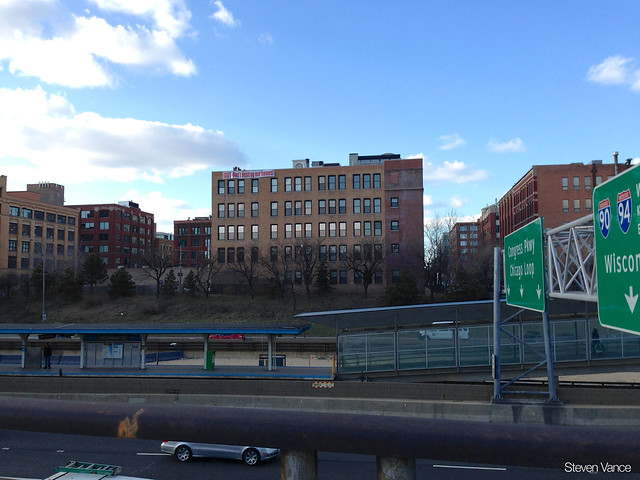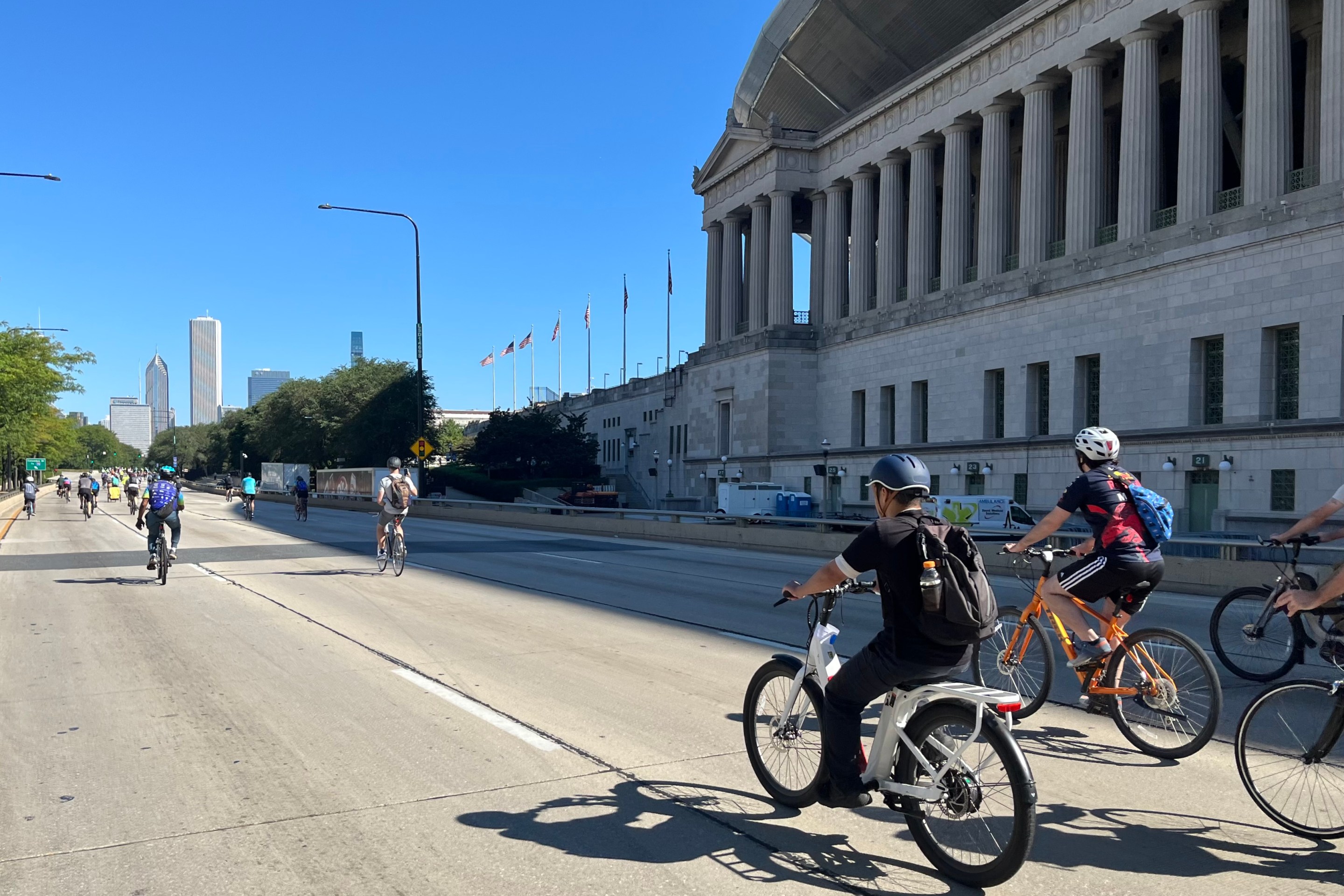The Circle Interchange expansion project that the Illinois Department of Transportation has crammed into the regional planning process is projected to increase pollution and decrease transit ridership, but no one has more reason to be opposed to the project than the 57 families who live at 400 South Green.
Until one month ago, IDOT had not informed residents of the building, located on the north bank of the Eisenhower Expressway, that they could soon have a new neighbor: a 40-foot-wide flyover over Halsted Street, with 40,000 cars and trucks roaring by every day, 7.5 feet away from their building.
There is a better way to build the ramp, placing it underneath Halstead instead of next to people's homes. Now that the Circle Interchange project is assured of a place in the regional plan, this is one of several fixes that will be needed to make it less harmful.
Residents of 400 South Green only found out about the proposed highway ramp in the beginning of March. It's part of IDOT's "preferred alternative," known as "alternative 7.1C" [PDF]. The residents, who were never invited to the Project Working Group meetings, are asking IDOT to consider another design, “alternative 15.4” [PDF], which eschews a flyover and places the ramp under Halsted.
No other building, aside from a pumping station and a storage warehouse, comes so close to any new flyover – and all the noise, visual blight, and pollution that comes with it – in IDOT's preferred alternative. Making matters worse, residents are recovering from highway-related damage, having recently spent $250,000 to shore up the building's structure after constant vibrations from trucks hitting potholes in the Ike.
The Ike is currently 18 feet below street level and 58 feet away from the building, with a line of trees that shields the first and second floors from traffic noise. Those trees would all be removed to accommodate the flyover. IDOT doesn’t consider the projected noise level to be high enough to require the construction of any noise mitigation.
"Our biggest concern is quality of life," said condominium association board president David Lewis, who works from home. "Our second concern is how to protect the building from the new construction of pylons and closer truck traffic,” Lewis explained, referring to the recent foundation fixes. “We've learned to live with the existing noise. We knew it was there when we moved in. But now [IDOT] is changing the rules."
According to IDOT project manager Steven Schilke, it's the policy of the Federal Highway Administration to measure existing noise at the nearest building entrance and not the nearest apartment or window. This policy effectively ignores the impact a project would have on urban, multi-unit apartment buildings, where residences can be much closer to a proposed roadway than any entrance.
Arlene Manelli has lived in the building for 19 years and is disappointed with how the residents were treated in the planning process. "The Circle Interchange project website text and documents stress the need to include stakeholders and have open communication," she said. "I'm appalled at the unfairness of this. I don't understand how they didn't find us. We should have been contacted directly."
The Stakeholder Involvement Plan [PDF], issued in August 2012, doesn't list the 400 South Green lofts (map). Schilke couldn't find them in the list of 95 groups that were invited to the initial public meeting and subsequent "Project Working Group" meetings. Schilke said that even though the residents weren't included in the initial meetings, IDOT is now working with the residents at 400 South Green.
The agency sent flyers to the residents in early March. "IDOT's had two years to put this plan together [since Governor Quinn asked IDOT to fast track it past CMAP] and we've had two weeks,” said Lewis.
When they finally did get a meeting with IDOT project consultant Paul Schneider on March 20, however, Lewis said it was productive. "They sent the right guy," he said. "He listened to what we had to say and we appreciate that a lot."
One option that would work better for building residents is to put the ramp under Halsted, known as "alternative 15.4." According to IDOT, alternative 15.4 adds $8 million to the project cost. However, reducing the number of flyovers in the project from three to two would be advantageous for the city.
"I walk a mile to the Metra station," Manelli said. "Have I considered moving closer to work, 40 miles away? No. I love this building. I'm concerned that the people on the Project Working Group don't have the urban dweller's perspective."
Flyovers, or overpasses, degrade the pedestrian environment. "From a pedestrian point of view, I avoid overpasses," said Manelli. "They are darker and they have higher amounts of dirt and exhaust that gets trapped."
Active Transportation Alliance Executive Director Ron Burke agrees with the residents about the negative impacts of IDOT’s preferred scenario. "They made it look all pretty, but how does that affect the overall sense of the community?” he said. “Does it become a car-dominated, unappealing place to be?"
It looks like moving the ramp is at least under consideration at IDOT. "We're currently looking at a number of options to revising the geometry to move it away from the building," Schilke said.
Call to Action
To learn about the latest Circle Interchange plans and voice your opinion, come to IDOT's public hearing on Wednesday afternoon at 625 S Ashland from 4 to 7 p.m. Contact your state legislator, additionally – find their contact information.







